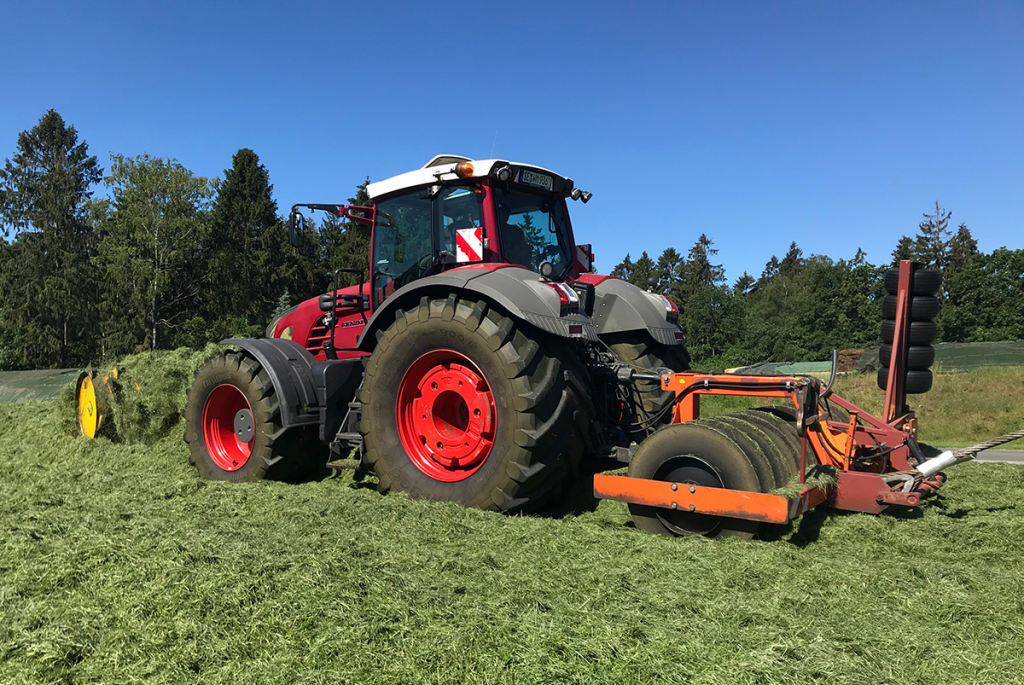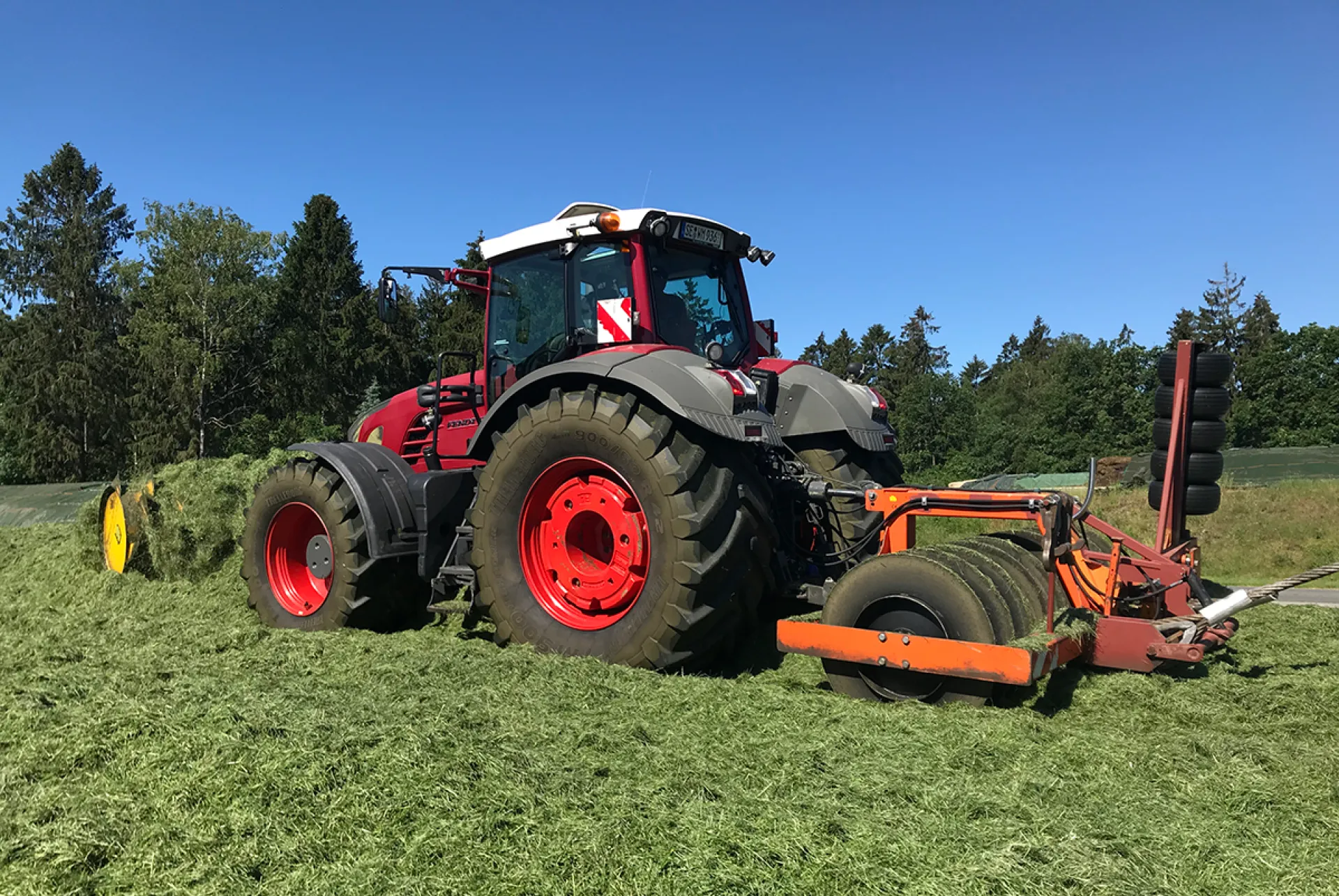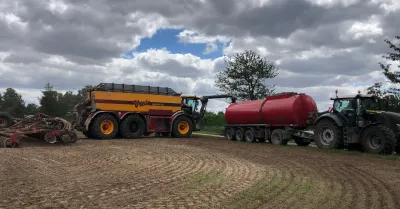Wilting Silage Goals
Material that will be used for ensiling should have a dry matter (DM) content of 30–38%, dependent on the crop. As a rule, the higher the DM content, the shorter the chop length (DM > 40%: 15 mm chop length). It is important to have a plan before bringing material in to be packed so that the DM content remains in the desired range.

- Recently sown or recently mown crops or high-yield areas often take longer to wilt and can therefore be left for the last loads.
- Consider bringing in crops from fields that are further away last. The resulting longer travel distances and longer intervals before each load reaches the silo leaves more time for packing the silos.
- Monitor your DM closely as you are bringing material in so that the cut length may be adjusted for drier material.
- Silos should be wide enough to allow parallel unloading and packing of loads.
- Silos without side walls need to be designed wider, as the silage pile becomes narrower towards the top.
- Fill by layers. Each layer should not be thicker than 6 inches, as greater thicknesses make it more difficult to pack the silage efficiently.
- Avoid unloading silage in piles in front or on top of a silo as it makes adequate packing particularly difficult. The extra time needed for spreading the large piles out can then be used for additional packing.
- Ensure that packing is performed as evenly as possible across the full surface. Having another tractor and driver available for pulling vehicles on top of the silage can be particularly useful.
- Each ton of silage delivered to the silo per hour requires 800 lbs of packing tractor weight.
- Front or rear weights can be added to increase this weight.
- Packers should be equipped with a silage spreader to ensure that silage is evenly distributed.
- The packing equipment should travel at a speed of 2-3 mph. 2-4 passes per track are ideal. If these parameters cannot be reached, it is useful to work with an additional compaction tractor.
- If several loads arrive at the same time, you may want to consider pausing the ensiling chain briefly to ensure that compaction remains even throughout the pile.
With the above goals about DM, silo filling, and packers in mind, reaching the proper packing density to produce high-quality silage is attainable.



